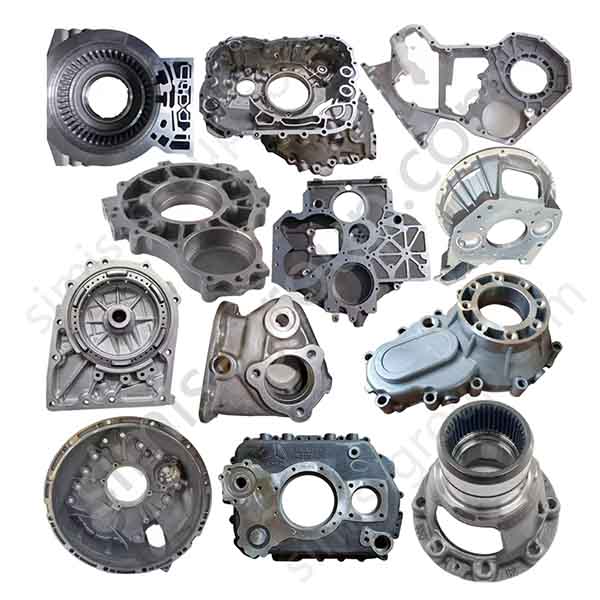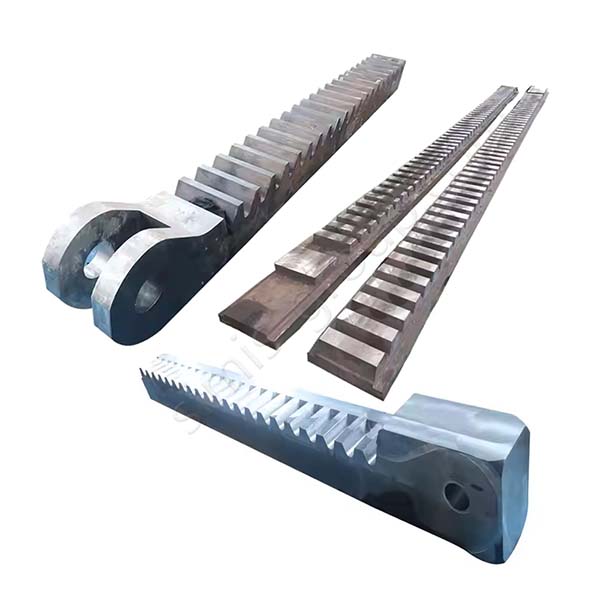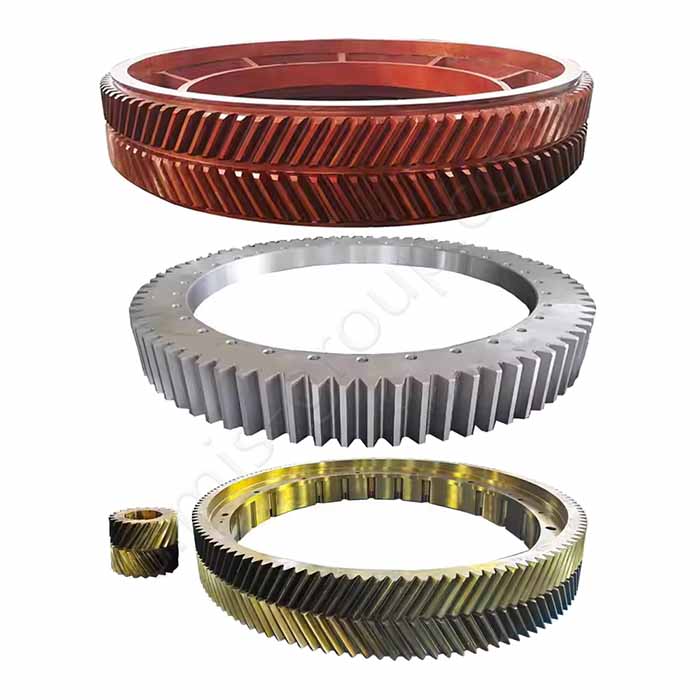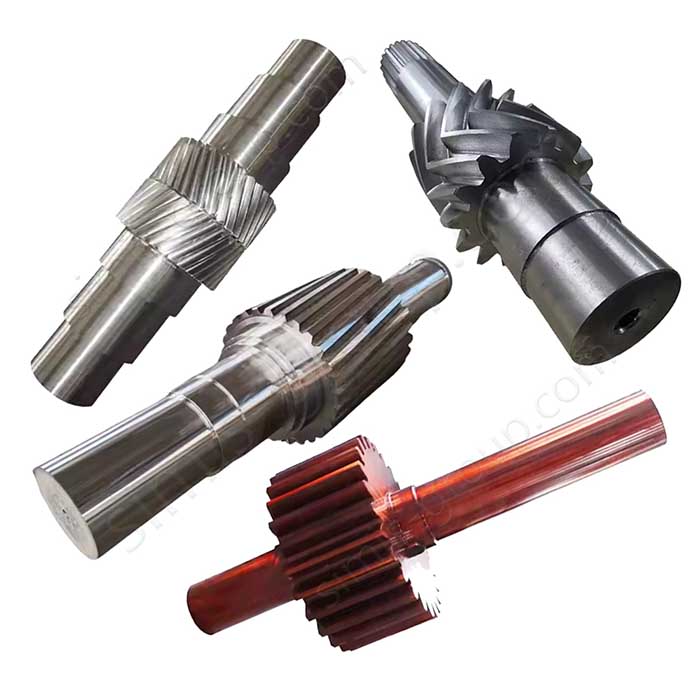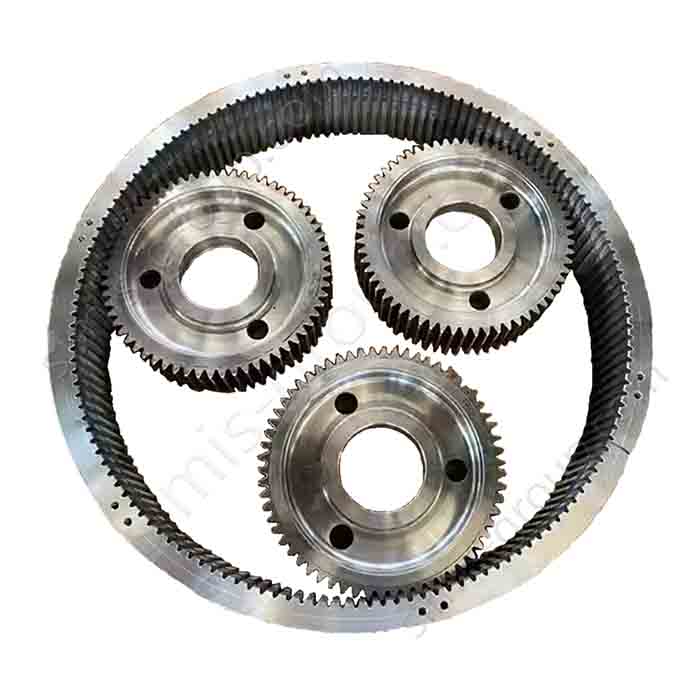Comparative Analysis of Cast Gears and Forged Gears
Gears, as core components of mechanical transmission systems, have a direct impact on their reliability, efficiency, and service life. In industrial manufacturing, casting and forging are the two most prevalent gear forming processes, each with unique technical characteristics and application advantages. According to a global gear market analysis report, cast gears will account for approximately 42% of the total industrial gear market in 2023, while forged gears will account for approximately 35%, with the remainder coming from other processes such as powder metallurgy. This data reflects the importance of these two processes in today's manufacturing industry.
As modern machinery and equipment evolve towards higher efficiency, precision, and lightweighting, the performance requirements for gears continue to increase. When selecting a gear manufacturing process, engineers need to comprehensively consider factors such as material properties, production costs, and lead times.
1. Process characteristics and technical features of cast gears
1.1 Main production processes of cast gears
The production of cast gears involves a variety of process routes, the most common of which include:
(1) Sand casting:
As the most traditional casting method, it is suitable for single-piece and small-batch production. A mold is made by mixing quartz sand and a binder, and gears weighing from a few kilograms to tens of tons can be produced. A heavy machinery company successfully cast a large mining gear with a diameter of 4.2 meters and a weight of 12 tons using resin sand molding.
(2) Investment casting:
Also known as lost wax casting, it can produce precision gears with complex shapes and high surface finish. Typical tolerance grades can reach CT6-CT7, and surface roughness Ra3.2-6.3μm. This method is often used for small precision gears in aircraft engines.
(3) Die casting:
Suitable for large-scale production of small and medium-sized non-ferrous metal gears. High-pressure injection (usually 50-100MPa) allows the molten metal to fill the mold quickly, resulting in high production efficiency. A certain automobile gearbox company uses aluminum alloy die-cast gears, with a single-shift output of up to 2,000 pieces.
(4) Centrifugal casting:
Particularly suitable for the molding of ring gears. Through the action of centrifugal force (300-1200rpm), the molten metal is kept close to the casting mold, resulting in high structural density. A certain wind power company uses centrifugal casting to produce a 2.5-meter diameter ring gear, with a structural density of over 98%.
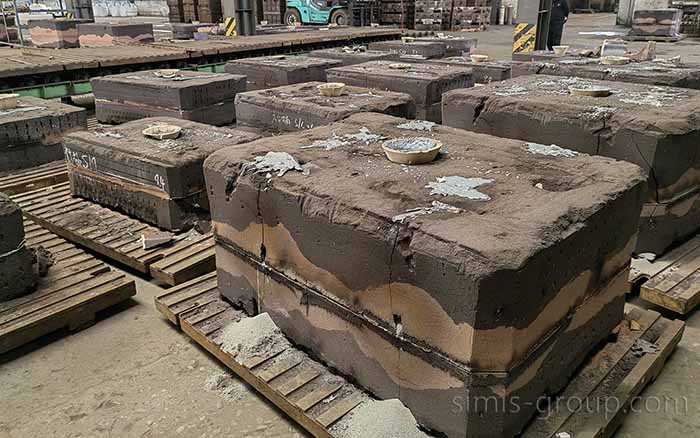
1.2 Material properties of cast gears
The material selection range of cast gears is wide, mainly including:
| Material Type | Typical Grade | Hardness (HB) | Main Characteristics |
| Gray Cast Iron | 250-300 | 180-240 | Good vibration damping, low cost |
| Ductile Iron | 500-600 | 70-240 | High strength, moderate toughness |
| Cast Steel | 500-600 | 160-220 | Weldable, good overall performance |
| Cast Copper Alloy | 250-350 | 80-120 | Wear and corrosion resistance |
| Cast Aluminum Alloy | 240-280 | 70-100 | Lightweight, good thermal conductivity |
The casting process gives the material unique microstructural characteristics. Although the dendritic structure formed during the solidification process reduces the continuity of the material, mechanical properties that meet the use requirements can still be obtained through reasonable process control (such as grain refinement and segregation improvement). Research data shows that the contact fatigue life of optimized cast steel gears can reach 70-80% of that of forged gears, while the cost is only 50-60%.
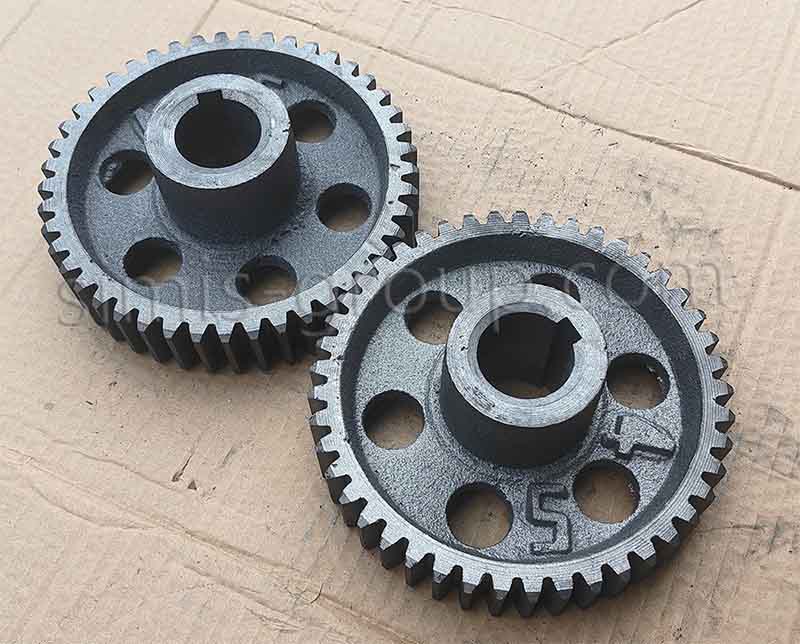
2. Process characteristics and technical characteristics of forged gears
2.1 Main production processes of forged gears
Forged gears improve the material structure through plastic deformation. The main processes include:
(1) Open die forging:
Suitable for the production of single-piece, small-batch large gear blanks.
(2) Closed die forging:
Suitable for mass production. Automobile transmission gears often use this method, and the material utilization rate can reach 60-70%.
(3) Ring forging:
Near-net-shape process, the tooth shape can be directly forged with small processing allowance.
(4) Cold forging/warm forging:
Forming at room temperature or medium temperature, with high precision and good surface quality. An automotive parts company uses cold forging to produce synchronizer gears with a module of 1.5, and the unit cost is 35% lower than that of cutting.
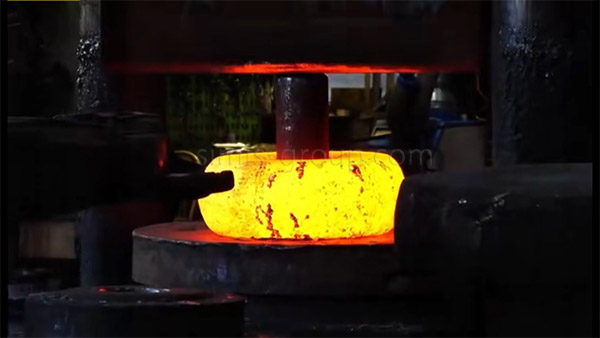
2.2 Material properties of forged gears
Forging significantly improves the mechanical properties of gear materials:
| Material Type | Tensile Strength (MPa) | Yield Strength (MPa) | Fatigue Limit (MPa) |
| Forged Carbon Steel | 600-750 | 350-450 | 250-300 |
| Forged Alloy Steel | 900-1100 | 650-800 | 400-450 |
| Forged Stainless Steel | 650-800 | 450-550 | 300-350 |
| Forged Aluminum Alloy | 300-350 | 240-280 | 120-150 |
During the forging process, metal flow lines are optimally distributed along the tooth profile, resulting in refined grains (typically 1-2 orders of magnitude finer than cast structures), and significantly increased dislocation density. Research has shown that the bending fatigue strength of forged steel gears is 30-40% higher than that of cast steel gears, and their contact fatigue life is increased by over 50%. Test data from a wind turbine gearbox manufacturer shows that the contact fatigue life of forged 18CrNiMo7-6 gears exceeds 2×10⁷⁷ cycles, far exceeding the 1.2×10⁷⁷ cycles of cast gears.
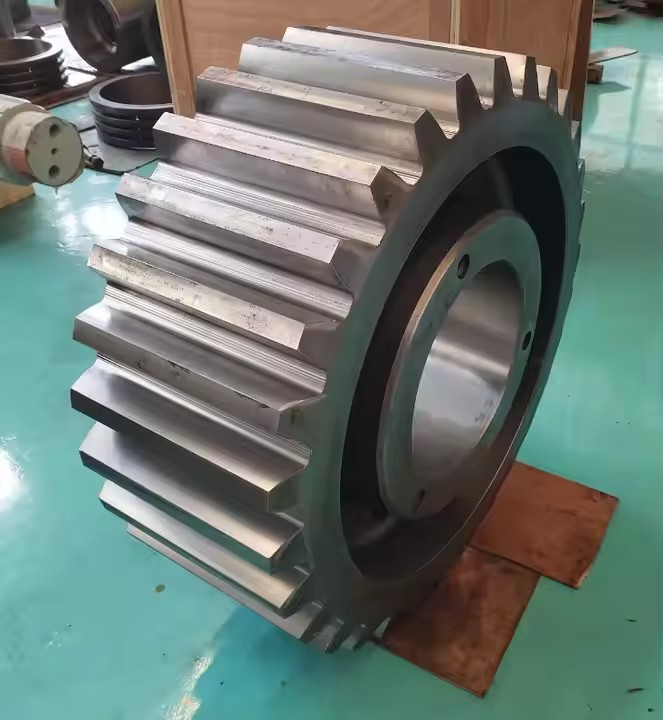
3. Comprehensive Comparison of Cast and Forged Gears
3.1 Mechanical Performance Comparison
| Performance Indicators | Cast Gears | Forged Gears | Difference Analysis |
| Tensile Strength | Medium | High | Forging is 30-50% higher than casting |
| Fatigue Strength | Medium-Low | High | Forging is 40-60% higher than casting |
| Impact Toughness | Low | High | Forging is 2-3 times higher than casting |
| Dimensional Accuracy | Low | High | Forging can reach IT7-8 |
| Surface Quality | Average | Good | Forging has a denser surface |
| Microstructure Density | Defective | Dense | Forging has no shrinkage pores or air holes |
3.2 Economic Analysis
From the perspective of the full life cycle cost:
(1) Initial cost:
Casting gears have obvious advantages, especially for large and complex gears. For a planetary gear with a diameter of 2 meters, the cost of casting is about 60-70% of that of forging.
(2) Processing cost:
Forged gears generally require less subsequent processing, especially precision forged gears, which can reduce the amount of cutting processing by 30-50%.
(3) Use cost:
The longer service life of forged gears can reduce the frequency of replacement and maintenance costs.
(4) Mold cost:
Casting (especially die-casting) mold costs are high and are suitable for large batches; forging mold costs are relatively low and are more economical for small and medium batches.
3.3 Comparison of applicable fields
| Applications | Recommended Process | Reasons for Selection |
| Heavy Machinery Gears | Casting | Large Size, Complex Shape |
| Automotive Transmissions | Forging | High Loads, High Speeds |
| Wind Turbine Gearboxes | Forging | High Reliability Requirements |
| Agricultural Machinery Gears | Casting | Cost-Sensitive, Medium Loads |
| Aerospace | Precision Casting | Performance Prioritized |
| General Speed Reducers | Casting | Medium Loads, Cost Prioritized |
4. Gear Shape Classification and Applicable Process Analysis
Gear shape design directly affects transmission performance, manufacturing process selection, and economic efficiency. Due to their structural characteristics, different gear types have significant differences in their adaptability to casting and forging processes. This section systematically analyzes the structural characteristics of common gear types and their applicable production processes.
4.1 Spur Gears
Structural Characteristics:
·Tooth trace parallel to the axis
·Symmetrical tooth shape
·Simple manufacturing
·Module range typically 0.5-20mm
Process adaptability:
| Gear Size | Recommended Process | Process Advantages | Typical Applications |
| Small Modulus (<2mm) | Precision Forging / Cold Forging | High Precision, Minimal Cutting | Micro Reducers, Instrumentation |
| Medium Modulus (2-8mm) | Die Forging / Die Casting | Economical and Efficient | Automotive Transmissions, General Machinery |
| Large Modulus (>8mm) | Sand Casting / Open Forging | Suitable for Large Sizes, Cost-Controlled | Mining Machinery, Heavy Equipment |
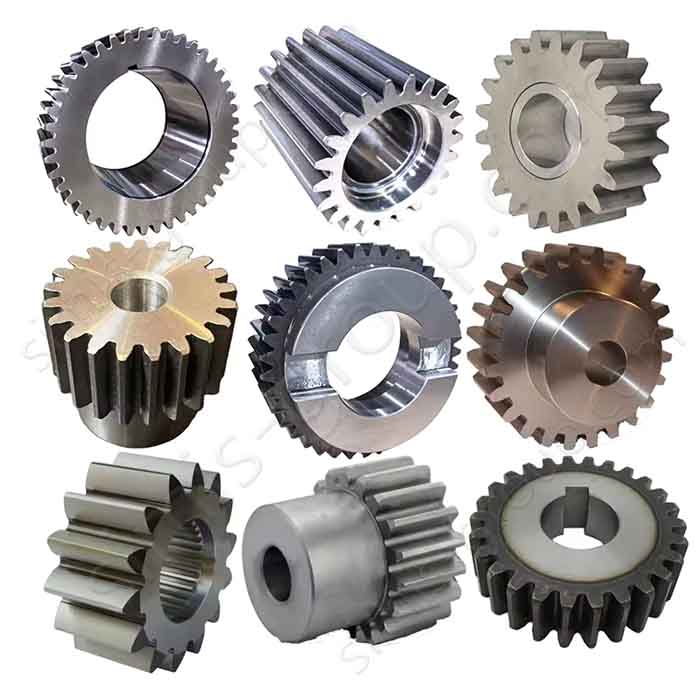
4.2 Helical Cylindrical Gears
Structural Features:
·Tooth traces form a certain angle with the axis (usually 8°-30°)
·Smooth transmission
·Generates axial force
·Module range is typically 1.5-25mm
Process adaptability:
--Forging advantages:
·Fiber streamlines are distributed along the tooth direction, increasing strength
·Suitable for small and medium-sized sizes (diameter <800mm)
·Widely used in automotive, wind power, and other fields
--Casting applications:
·Extra-large sizes (diameter >1.5m)
·Low speed and heavy load applications
·Internal cooling channels can be designed
Technical Points:
Special considerations for forging helical gears:
·Consideration of helix angle compensation in die design
·Optimization of pre-forging shape reduces material flow resistance
·Warm forging improves metal filling
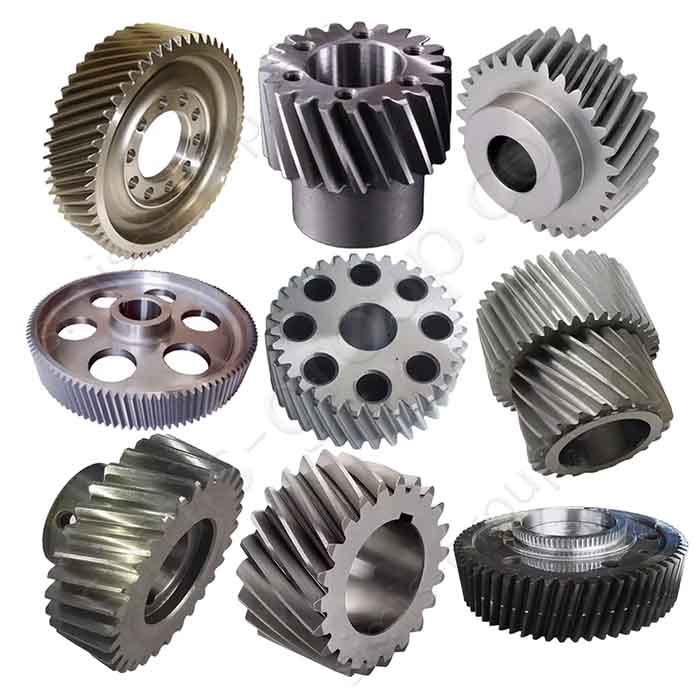
4.3 Bevel Gears
Structural Features:
·Tapered tooth flank
·Used for intersecting shaft transmission
·Complex tooth profile
·Module range is typically 2-30mm
4.4 Worm Gear
Structural Features:
·Interlaced shaft transmission
·Large transmission ratio
·Self-locking characteristics
·Module range: Typically 1-25mm
Process Specificities:
--Worm Wheel:
·Usually cast (mostly copper alloy)
·Centrifugal casting improves tooth surface density
·Wide range of sizes available
--Worm:
·Forging recommended for small and medium-sized parts
·Casting acceptable for large parts
·Subsequent heat treatment and finishing required
Material Matching Recommendations:
·Worm Wheel: ZCuSn10P1 (cast tin bronze)
·Worm: 42CrMo (quenched and tempered)
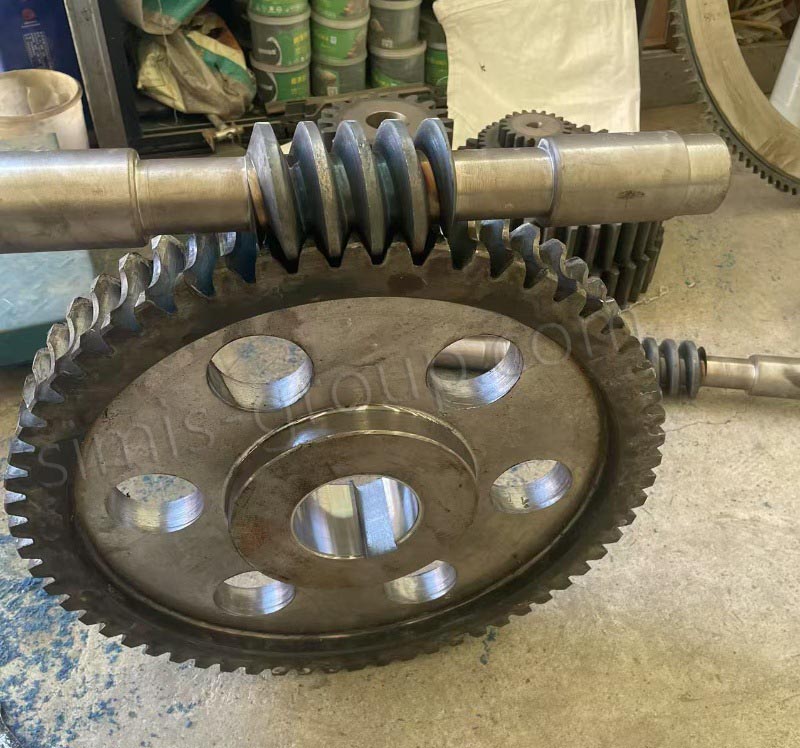
4.5 Internal Gears
Structural Features:
·Tooth profile on the inner surface
·Compact layout
·High machining difficulty
·Module range: typically 1-15mm
Process Challenges and Countermeasures:
--Forging Difficulties:
·Difficulty in mold release
·Solution: Segmented mold design
--Casting Advantages:
·Complex internal tooth profiles can be formed in one go
·Suitable for mass production
--Economic Balance:
·Diameter <300mm: Consider precision forging
·Diameter >300mm: Casting is more economical
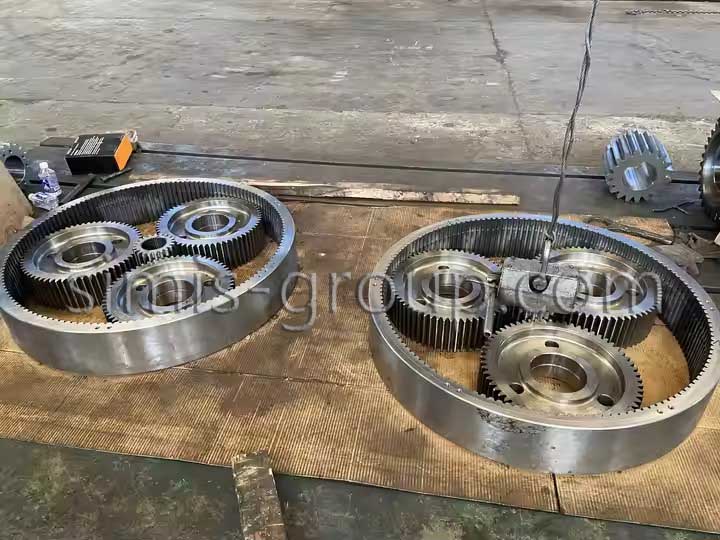
4.6 Non-circular Gears
Structural Features:
·Non-circular pitch curve
·Variable transmission ratio
·Special motion patterns
·Module range: typically 1-10mm
Process Specificities:
--Small batches:
·Mainly machining
·3D printed wax pattern + investment casting
--Large batches:
·Precision casting
·Special forging process development
5. Engineering Recommendations for Gear Selection and Process Selection
Based on the above analysis, a practical guide to gear shape and process selection is summarized:
Size Priority Principle:
·Diameter <500mm: Forging is preferred
·Diameter 500-1000mm: Comprehensive evaluation
·Diameter >1000mm: Casting is more advantageous
Precision Requirements:
·AGMA Grade 10 and above: Forging is mandatory
·AGMA Grade 8-10: High-quality casting is achievable
·AGMA Grade 8 and below: Casting is economical
Batch Economy:
·Large batches: Die casting/die forging
·Small and medium batches: Sand casting/open die forging
·Single piece: Machining or 3D printing + casting
Special Structural Considerations:
·Internal cooling channels: Casting is mandatory
·Ultra-high strength requirements: Forging is mandatory
·Composite structures: Casting is more feasible
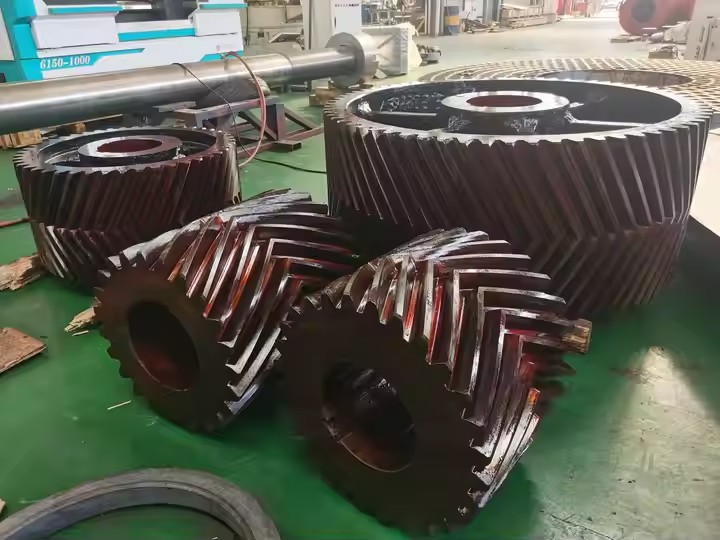
6. SIMIS Group's Professional Services
As an expert in metal parts manufacturing, SIMIS Group provides customers with a full range of gear manufacturing solutions:
(1) Process Consulting:
We recommend the optimal casting or forging process based on your application requirements. Our team of engineers has more than 20 years of gear manufacturing experience and can help you balance performance and cost.
(2) Material Selection:
We offer a variety of options from traditional steel to high-performance alloys, including cast steel, forged steel , cast iron and non-ferrous metals.
(3) Quality Control:
We are equipped with advanced equipment such as three-coordinate measuring machines, gear testing centers, and ultrasonic flaw detectors to ensure that our products meet international standards such as AGMA, DIN, and JIS.
(4) Customized Services:
From sample development to mass production, we provide OEM/ODM services, with a maximum gear processing diameter of up to 5 meters to meet various special needs.
(5) Technical Support:
Provide value-added services such as gear design optimization, failure analysis, and life assessment to help customers improve product performance.
Based on our extensive experience in gear manufacturing, SIMIS Group can provide you with professional process selection consulting and customized production services. Whether it is cast gears with special tooth shapes or high-performance forged gears, we can provide the optimal solution.


